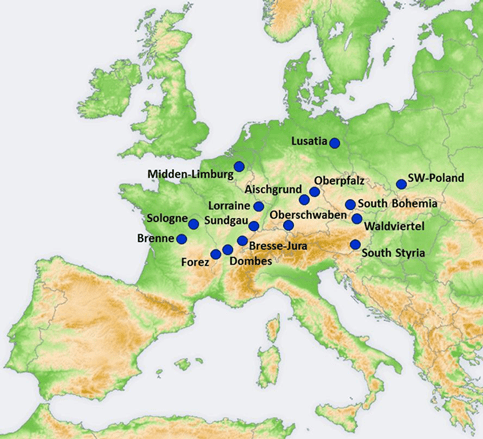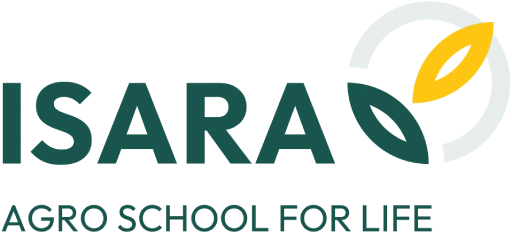In France and in Europe, some extensive fish farming environments were man-made over the past centuries, either as river by-passes, or filled by the run-off water of the catchment area. There are several dozens of thousands of such fish ponds in Europe, connected into networks and creating vast wetlands.

For more than 20 years, Isara has been working on the management of such small-scale aquatic environments, particularly those used for fish farming. Researchers have developed many programmes to gather precise data for the management of these aquatic environments:
- How to use appropriate methods to assess their ecological condition ?
- Which biodiversity are they home to ?
- How to manage the fish production in an agroecological perspective, that is to say producing fish while conserving biodiversity ?
- What are the compounds (and their quantity) transferring form the catchment to the pond networks?
- What can these environments contribute to land adaptation to climate change ?
Recent or ongoing research programmes
- 2020-2024 : PONDERFUL (H2020 Europe) : POND Ecosystems for Resilient FUture Landscapes in a changing climate
- 2020-2023 : SEPURE (FEAMP Europe) : nouvelles stratégies de construction et de conduite de système de production en étang pour une pisciculture durable
- 2017-2020 : SERVIPOND (INRA, Ecoserv2) : Analyse environnementale : un cadre pour évaluer les services écosystémiques ? Application aux systèmes étangs piscicoles
- 2014-2017 : RESOTROPHIC (Région Rhône-Alpes – Conseil Général de l’Ain) : Analyse fonctionnelle du réseau trophique des étangs – Conséquences sur la gestion sociotechnique et économique de l’activité piscicole.
- 2012-2016 : TIPPINGPOND (ERA-NET Europe BIODIVERSA) : « TIPPING points, biodiversity, resilience and ecosystem services: PONDs as model systems ».
Major publications by the team these past 10 years
- Doledec S. Simon L., Blenus J., Rigal A., Robin J., Mermillod-Blondin F., 2021. Multiple stressors shape invertebrate assemblages and reduce their trophic niche: A case study in a regulated stream. Science of the Total Environnement, 773, in press.
- Zamora-Marína, J.M., Ilg C., Demierre, E., Bonnet, N., Wezel, A., Robin, J., Vallod, D., Calvoe, J.F., Oliva-Paternaa, F.J., Oertli, B. , 2021. Contribution of artificial waterbodies to biodiversity: a glass half empty or half full? Science of the Total Environment 753, in preAubin, J., Thomas, M., Robin, J., Wezel, A., 2017. Agroecological management in fish pond systems. In: Wezel A., Agroecological practices for sustainable agriculture: principles, applications, and making the transition, 494p.
- Aubin, J., Thomas, M., Robin, J., Wezel, A., 2017. Agroecological management in fish pond systems. In: Wezel A., Agroecological practices for sustainable agriculture: principles, applications, and making the transition, 494p.
- Vanacker, M., Wezel, A., Arthaud, F., Guérin, M., Robin, J., 2016. Determination of tipping points for aquatic plants and water quality parameters in fish pond systems: A multi-year approach. Ecological Indicators, 64 : 39-48.
- Wezel, A., Oertli, B., Rosset, V., Arthaud, F., Leroy, B., Smith, R., Angelibert, S., Bornette, G., Vallod, D., Robin, J., 2014. Biodiversity patterns of nutrient-rich fish ponds and implications for conservation. Limnology, 15: 213-223.
- Wezel, A., Robin, J., Guerin, M., Arthaud, F., Vallod, D., 2013. Management effects on water quality, sediments and fish production in extensive fish ponds in the Dombes region, France. Limnologica Vol. 43, n°3, 210–218.
- Rosset, V., Angelibert, S., Arthaud, F., Bornette, G., Robin, J., Wezel, A., Vallod, D., Oertli, B., 2014. Is eutrophication really a major impairment for small waterbody biodiversity? Journal of Applied Ecology, 51(2): 415-425.
- Robin J., Wezel, A., Bornette, G., Arthaud, F., Angélibert, S., Rosset V., Oertli B., 2014. Biodiversity in eutrophicated shallow lakes: determination of tipping points and tools for monitoring. Hydrobiologia, 723:63–75.
- Robin, J., 2013. Algues : phytoplancton, épiphytes, macroalgues. In: Oertli Beat & Frossard Pierre-André, Mares et étangs : écologie, conservation, gestion, valorisation. Presses Polytechniques et Universitaires Romandes collection « Ingénierie de l’Environnement » : 71-81.
- Robin, J., 2013. Physico-chimie de l’eau. In: Oertli Beat & Frossard Pierre-André, Mares et étangs : écologie, conservation, gestion, valorisation. Presses Polytechniques et Universitaires Romandes, collection « Ingénierie de l’Environnement » : 46-55.
- Prompt, E., Guillerme, N., Vallod, D., Robin, J., Wezel, A., Bornette, G., Marailhac, D., 2011. Les étangs piscicoles, un équilibre dynamique. Les cahiers techniques, Conservatoire Rhone-Alpes des Espaces Naturels, France, 27p.


